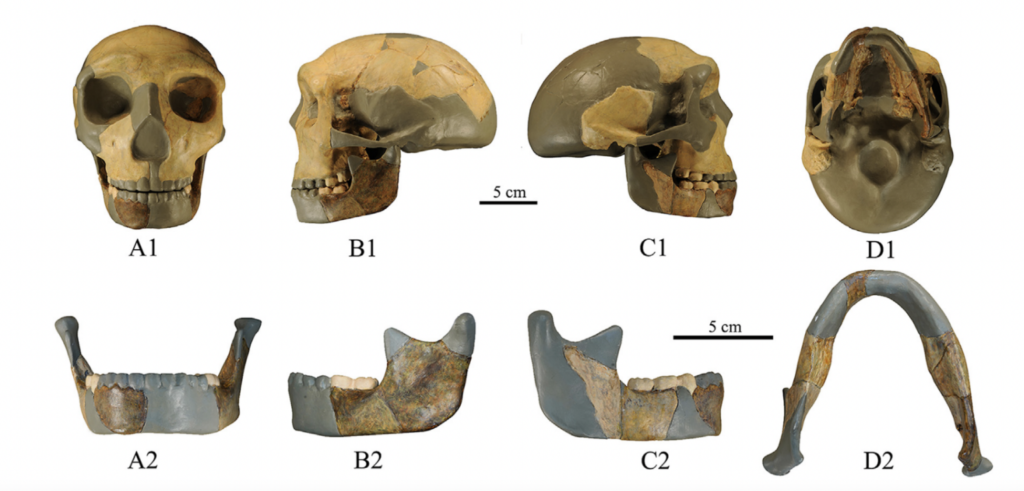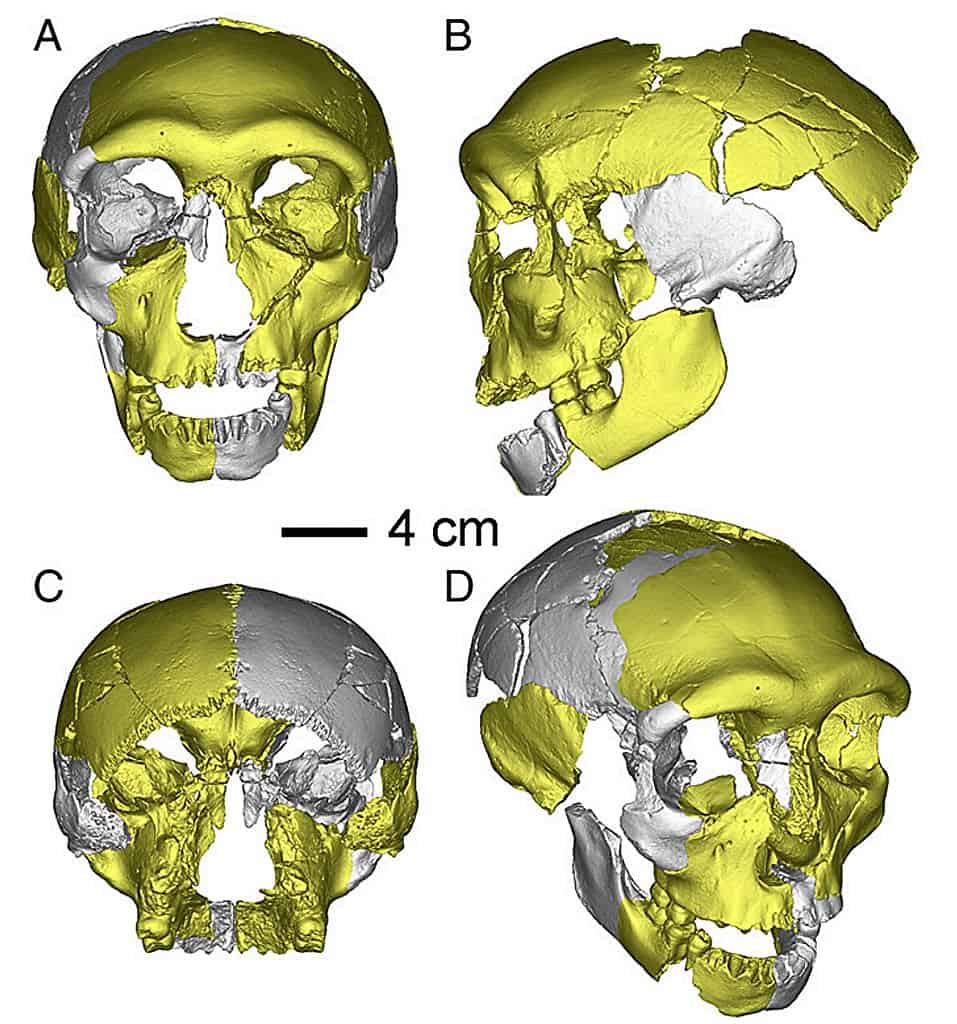
A bizarrely shaped ancient skull unearthed in China may prompt a revision of the story of human evolution. Unlike any hominin found before, this fossil does not neatly fit into the established evolutionary paths of Neanderthals, Denisovans, or modern humans. At a loss as to which branch of the human family tree to place the specimen onto, the scientists have instead proposed the fossil may belong to an entirely new branch.
An enigmatic human: could this be a new hybrid lineage?
Back in 2019, Chinese scientists came across a partial skull, jawbone, and leg bones in Hualongdong, eastern China. The remains, which belong to a juvenile estimated to have lived around 12 or 13 years, were dated to roughly 300,000 years ago under the designation “HLD 6”.
Upon closer inspection, HLD 6 has proven to be a bit of an enigma due to its distinct physical features that diverged from recognized human lineages. Initially, it was thought that HLD 6’s mixed features could be attributed to its young age. However, comparative analyses with both adult and immature hominin specimens have debunked this theory.

The fossil’s jawbone has a unique triangular shape and bend, closely resembling both modern humans and Late Pleistocene hominids. However, the absence of a chin is more reminiscent of the Denisovans, an ancient hominin group distinct from Neanderthals and Homo sapiens.
According to the team, which involved scientists from the Chinese Academy of Sciences, Xi’an Jiaotong University, and the University of York in the UK, these remains could potentially be a hybrid between the branch leading to modern humans and the one producing other ancient hominins in the same region, such as the Denisovans.

Traditionally, Pleistocene-era hominin fossils from China have been seen as transitional stages on the path to Homo sapiens or as variations of Homo erectus. Yet, HLD 6 doesn’t align with the Homo erectus species and instead displays traits akin to more recent hominin lineages. It looks like HLD 6 is stuck in a limbo between the lineage that produced us modern humans and other more primitive branches of the Homo genus.
Past genomic research on Neanderthal remains has hinted at a fourth lineage of hominins during the Middle to Late Pleistocene, but there was no conclusive physical evidence until now. This new discovery may finally fill in a crucial gap in our evolutionary history.
Although it is difficult to make definite claims based on a single specimen — and an incomplete one to boot — the researchers posit that Asia could have once hosted three coexisting lineages: Homo erectus, Denisovan, and the newly found hominid. This would mean that certain “modern” attributes emerged long before Homo sapiens‘ presence in China about 120,000 years ago.
The story of human evolution remains a work in progress, with many surprises waiting to be discovered.
The findings appeared in the Proceedings of the National Academy of Sciences.









